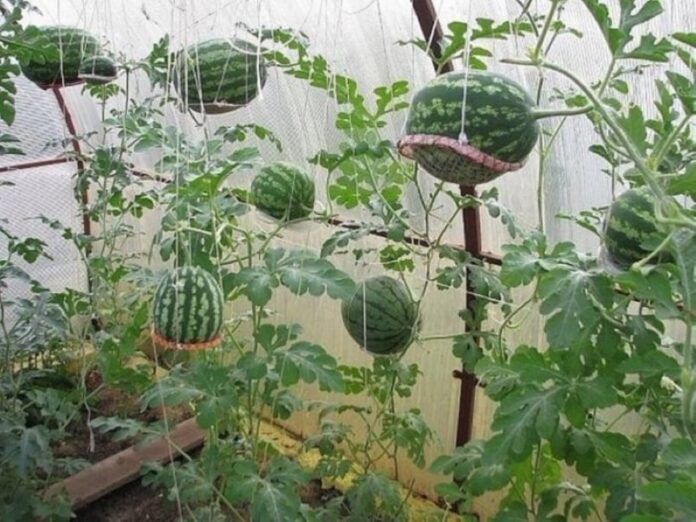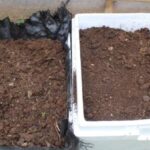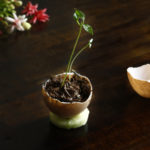Watermelons thrive in tropical and subtropical regions, where the climate is warm, dry, and sunny. The optimal temperature range for watermelon plants to flourish is between 25-30 degrees Celsius.
It is crucial not to plant watermelons in areas with low temperatures and frequent rainfall. Such conditions promote the development of diseases in the plants, hindering their growth and resulting in subpar fruit quality.
Watermelons are typically harvested around 65-70 days after sowing, although this timeframe may vary depending on the variety, climatic conditions, and cultural practices.
1. How to Grow Watermelons on a Trellis
For those with limited space, growing watermelons on a trellis is an excellent alternative. This space-optimizing method is popular among gardeners and offers a solution for smaller plots.
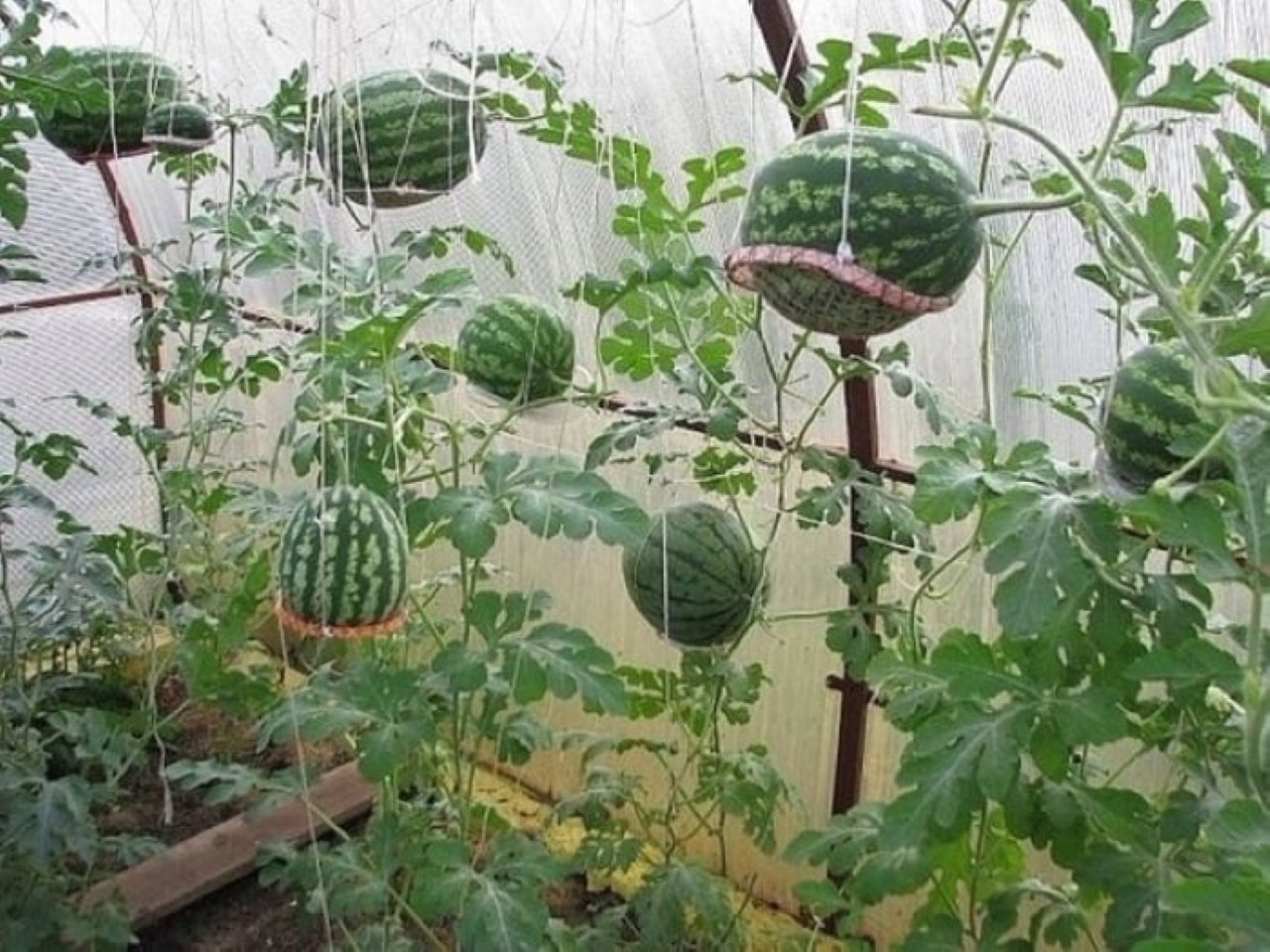
Step 1: Sun-dry the seeds for 1-2 hours.
Step 2: Soak the seeds in warm water at a temperature of 30-40 degrees Celsius for 3-4 hours.
Step 3: Remove the seeds from the water, rinse them thoroughly, and dry them with a cloth. Then, wrap them in a moist cloth and keep them there for about 3 days.
Step 4: Once the seeds have sprouted, plant them in the ground until the seedlings reach a height of approximately 10cm.
Step 5: Construct a trellis: Use wooden poles cut into cylindrical shapes, about 2 meters long. Insert them into the ground at a 30-degree angle to ensure the vines get ample sunlight.
Step 6: Drive two additional stakes into the ground on either side of the wooden pole, and stretch a string between the poles to support the growing vines.
Step 7: Remember to fertilize with organic matter and water regularly.
2. Growing Watermelons in Pots or Letting Them Trail Down
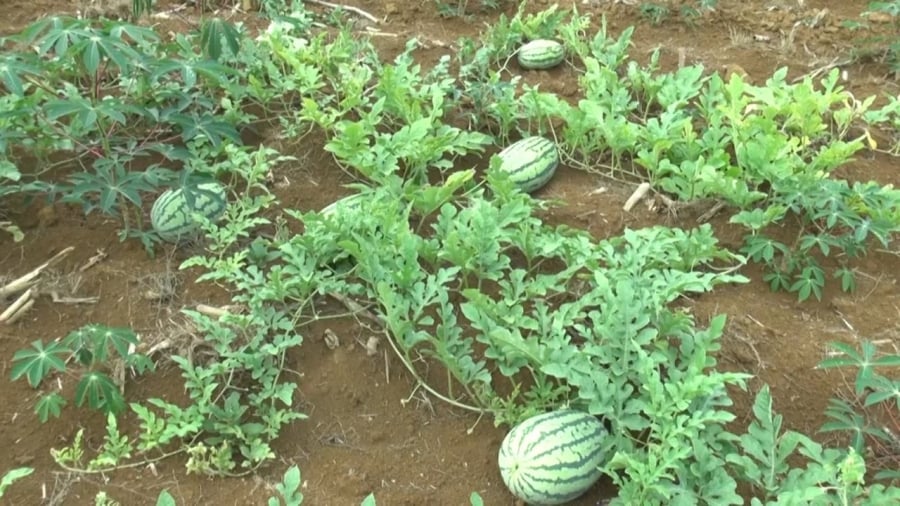
Step 1: Sun-dry the seeds for approximately 1-2 hours.
Step 2: Soak the seeds in warm water maintained at a temperature between 30 and 40 degrees Celsius for a duration of 3 to 4 hours.
Step 3: Retrieve the seeds from the water, giving them a thorough rinse before drying them with a cloth. Subsequently, they should be enveloped in a damp cloth and left undisturbed for three days.
Step 4: Upon the emergence of sprouts from the seeds, proceed to sow them into seedling trays. A sprout length of roughly 0.5 mm indicates their readiness for this step.
Step 5: Following a two-week period, the seeds will have metamorphosed into young plants. Transfer them into pots at this stage, and maintain diligent watering to facilitate their continued robust growth.


























